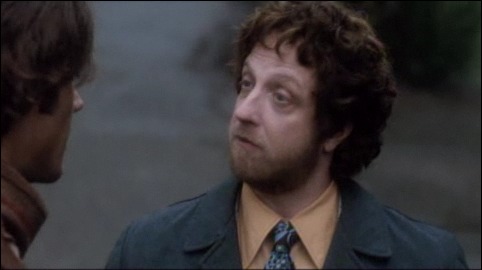Interesting. Vanity Fair published the 16-point memo painter Thomas Kinkade distributed to the crew before they began shooting Thomas Kinkade’s Christmas Cottage, a film telling Kinkade’s own creation myth, how he became an artist to save his mom’s house from foreclosure.
The memo is pretty facile, all sunsets and shadows, and there are multiple instructions to the crew to, when in doubt, add more Barry Lyndon. Also, . And hidden references to reward what, “[i]n the realm of fine art we refer to…as ‘second reading, third reading, etc.'”
…References to my children (from youngest to oldest as follows): Evie, Winsor, Chandler and Merritt. References to my anniversary date, the number 52, the number 82, and the number 5282 (for fun, notice how many times this appears in my major published works). Hidden N’s throughout — preferably thirty N’s, commemorating one N for each year since the events happened.
Hmm, sounds like fun.
Vanity Fair has a softly illuminated fish in a careworn barrel, and they still can’t shoot it. The set is snobby and misinformed at best. The movie is not “based on one of his paintings,” but on Kinkade’s own youth. His paintings are probably all based on his fantasy/memories of his youth, then, but still. This single sentence is shot through with lazy inaccuracies:
The art world has never exactly embraced Kinkade, though in the last 16 years his company and its partners have reportedly made more than $4 billion selling his signature renderings of idyllic settings, which employ diffuse light sources, aggressive pastels, and a domineering religious worldview.
The art world has never embraced Kinkade. His once-publicly traded company’s topline revenues are easily researchable, and there’s no mention of its implosion and the collapse of his over-merchandised, over-franchised house of cards. And on and on.
He’s been reduced to a licensing hack, but there has to be a better analysis–or even a more thoughtful takedown–to be made about the willfully escapist nostalgia that drives people to make–and consume–art like Kinkade’s.

As if the caliber of the actors weren’t enough–from Marcia Gay Harden and Peter O’Toole, to Ed Asner and Chris “Cabin Boy” Elliott–to warrant some attention, there’s the film’s timely-yet-impossibly fanciful story itself. I mean which aspect is sounds more fairy tale-ish to you? That making art is the obvious, instant path to financial security, that a small, white town would be brought together by a random mural painting, or that the unimaginable crisis they rally to solve is an impending foreclosure?
Though Kinkade’s memo is shot through with references to creating mood and emotion, there is essentially no mention of character, performance, motivation, even the story. It’s like all that evocation happens regardless of the actors, or what happens in these candlelit scenes. But his paintings never have actual people in them, just hints of people. Kinkade’s memo’s unstated goal seems to be the faithful re-creation of the experience of viewing one of his paintings. Whatever joy or nausea that entails depends on the viewer.
Thomas Kinkade’s 16 Guidelines for Making Stuff Suck [vanityfair.com via kottke]
Hmm, title change, implausible date: Thomas Kinkade’s Home for Christmas (2008) (V) [imdb]
